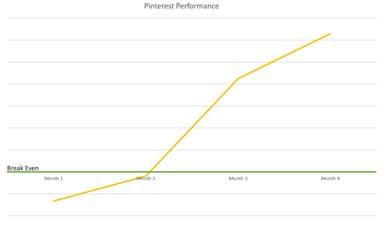The NFL season officially kicks off on Thursday, signaling a new start for brands to get off the sidelines and begin their football-themed messaging, targeting fervent and frenzied fans for the fall and winter.
Brands have forever used football to sell everything from soda to soap, cars, video games and beer—you name it—in order to score with a highly engaged audience.
NFL programming occupied 10 of the top 25 most-watched prime time television programs of 2016—and fans love watching while firing off scorching hot takes on Twitter. Such Belichick-like ratings dominance—which is only projected to grow—allowed for the league to command and claim a record $3.5 billion in ad revenue last year.
Brands like PepsiCo are trying reach new and younger audiences who consume sports on the second screen just as much (if not more) than on TV screens.
PepsiCo is gamifying its line of beverage and snack products for the football season and leveraging platforms like Snapchat with the programs “They Win, You Score” and “Tostitos Lucky Bags.” The digital-first campaigns integrate interactive content and creativity in order to deliver results by allowing consumers to get an inside look at their favorite teams and participate in weekly games with the potential to win prizes like Super Bowl tickets and NFL swag.
“Gamification of NFL watching is a huge trend that we wanted to tap into,” Christina Clarke, senior director of marketing of Frito-Lay North America, told AListDaily. “We’re working even harder on making these efforts even more personal for consumers. We’ve often created large engagement programs and we will continue to do that, but having an ongoing dialogue with our consumers—especially millennials—is appealing for them and for us.”
The NFL isn’t bulletproof to millennials, which have proverbially been the plague of everything in existence. The sport is increasingly losing the demographic as well, and brands are game-planning appropriately to avoid a punt. Dawn Hudson, the NFL’s chief marketing officer, is the former CEO and president of Pepsi and might perhaps be the right executive primed for the challenge.
Clarke said both programs are unique to Snapchat—a platform the consumers they’re targeting use regularly—citing that 82 percent of millennials use Snapchat while making purchases in stores. The brand is applying gamification learnings from last year’s Doritos #MixArcade E3 activation into their two NFL programs as they continue to explore new areas of marketing technology.
“We’re always looking for the latest technology that helps us connect to our fans, but still makes business sense for the brand,” Clarke said. “With younger consumers, there has always been a sense of competitiveness and gaming, but now it’s evolved in the digital age.”
For the upcoming season, 24 league sponsors across 37 brands are activating their NFL rights with more than 40 television and 55 digital spots using 55 current or former players, according to Sports Business Daily.
Football fans are such a sought-after consumer group that Amazon is now reportedly promising that it’ll track how many viewers see sponsors’ in-game ads and then browse or buy products on its site. That means makes like Pepsi can now track to see if TV ads like “The Fun Doesn’t End Zone” starring Steelers wide receiver Antonio Brown have an actual effect among consumers.
Networks like Fox are also maximizing the millions of live eyeballs glued to TV screens each Sunday by allowing brands to get creative and test a new kind of marketing with bite-sized six-second ads.
Fresh off of a Super Bowl ad from February featuring Ernie the Elephant and Seahawks star Richard Sherman, consumer packaged goods company Wonderful Pistachios is taking another crack at their sports marketing strategy by launching “Put a Smile on Your Snackface,” the largest national campaign to date for the brand.
The snack brand, which contributed 14 percent of all snack category dollar growth last year, is again tapping Sherman and Packers linebacker Clay Matthews to appear in comedic ads throughout the season. In addition to digital efforts, it will be supported by print, in-store displays and point-of-sale material up until the Super Bowl.

“More than half of Wonderful Pistachios consumers eat pistachios while watching sports. It’s an opportunity where consumers can mindlessly graze on junk food, and Wonderful Pistachios wants to be a healthy salty snack alternative consumers feel good about when munching on during game time,” Adam Cooper, vice president of marketing for Wonderful Pistachios, told AListDaily. “Wonderful Pistachios is the fastest-growing major snack brand based on actual consumer purchase data since November 2016. This beats out major snack brands that usually dominate the snack aisle.”
The $55 million campaign for the upcoming season was made by The Wonderful Agency, its in-house creative team. Cooper said the snack company’s shift in strategy largely stems from consumers currently demanding more fresh and healthy options.
“Adapting to this can be a challenge for traditional snack companies,” he said. “This is proven by our huge growth this past year. A person has an average of 2.7 snacks per day. They are snacking more than they ever have before. In fact, there are now more snacking occasions than meal occasions each day. Eating has changed tremendously in the US.”
Cooper said the success of their Super Bowl campaign, which costs a cool $5 million for brands just to play ball for 30-seconds on TV, led to more consumers reaching for Wonderful Pistachios than ever.
It also put the company on a path to re-up its pigskin messaging and bring the newly created odd superlatives featuring Sherman and Matthew.
“More than three million new households were choosing Wonderful Pistachios and we increased the association between Wonderful Pistachios and football by 52 percent,” Cooper said. “These are clear indicators that Super Bowl was a smart marketing avenue for our brand . . . We don’t have another Super Bowl commercial planned at the moment—but never say never.”


